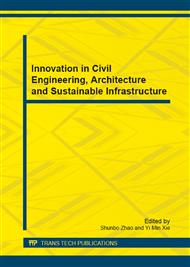[1]
Y. Peng, Z. Xiao, A Theoretical and Experimental Study on Air-Lift Pump Phenomena, Journal of Northeast University of Technology, 3 (1989) 111-117.
Google Scholar
[2]
J.Chen, et al, Performance enhancement of a diffusion-absorption refrigerator, International Journal of Refrigeration, 3 (1996) 208-218.
Google Scholar
[3]
A. Delano, Design Analysis of the Einstein refrigeration cycle, Georgia Institute of Technology, Atlanta,1998.
Google Scholar
[4]
L. Schaefer, Single Pressure Absorption Heat Pump Analysis, Georgia Institute of Technology, Atlanta, 2000.
Google Scholar
[5]
H. Zheng, Study on enhanced heat transfer of lunate channel in solar energy air-conditioning system, Refrigeration, 1 (2003) 18-22.
Google Scholar
[6]
L. Lu, H. Zhang, Experiment of Diffusion-Absorption Refrigeration, Cryogenics Cryo. & Supercond, 35 (2007) 79-83.
Google Scholar
[7]
C. Tang, D. Liu, Experimental Study on the Performance for Pump Bubble Single Pressure Absorption Refrigeration System, Fluid Machinery, 8 (2009) 49-53.
Google Scholar
[8]
L. Lin, Y. Wang, T. Shemmeri, et a1, Characteristics of the diffusion absorption refrigerator driven by the waste heat from engine exhaust, Journal of Process Mechanical Engineering, 3 (2006) 139-149.
DOI: 10.1243/09544089jpme102
Google Scholar
[9]
W. Li, Y. Cheng, et al, The latest research results concerning the absorption refrigeration cycle driving by low temperature heat source and its development trend, Energy Conservation, 11 (2009) 21-23.
Google Scholar
[10]
H. Wang, L. Hu, Experimental research on ammonia-sodium thiocyanate diffusion absorption refrigeration system, Refrigeration, 1 (1999) 9-13.
Google Scholar
[11]
A. Koyfman, M. Jelinek, A. Levy, I. Borde, An experimental investigation of bubble pump performance for diffusion absorption refrigeration system with organic working fluids, Applied Thermal Engineering, 23 (2003) 1881-1894.
DOI: 10.1016/s1359-4311(03)00162-5
Google Scholar
[12]
H. Li, S. Cui, Thermodynamic parameters analysis about affecting the COP of diffusion absorption refrigerator, Low Temperature and Specialty Gases, 6 (2000) 12-14.
Google Scholar
[13]
Y. Wu, The heat and mass analyses of the diffusion-absorption heat pump system-research on the generator, Master thesis of Shanghai Jiaotong University, China, 2004.
Google Scholar
[14]
A. Zohar, M. Jelinek, A. Levy, I. Borde, The influence of diffusion absorption refrigeration cycle configuration on the performance, Applied Thermal Engineering, 27 (2007) 2213-2219.
DOI: 10.1016/j.applthermaleng.2005.07.025
Google Scholar
[15]
X. Xue, D. Liu, et a1, Research progress of single pressure absorption refrigeration technology, Refrigeration and Air-Conditioning, 5 (2008) 30-34.
Google Scholar


